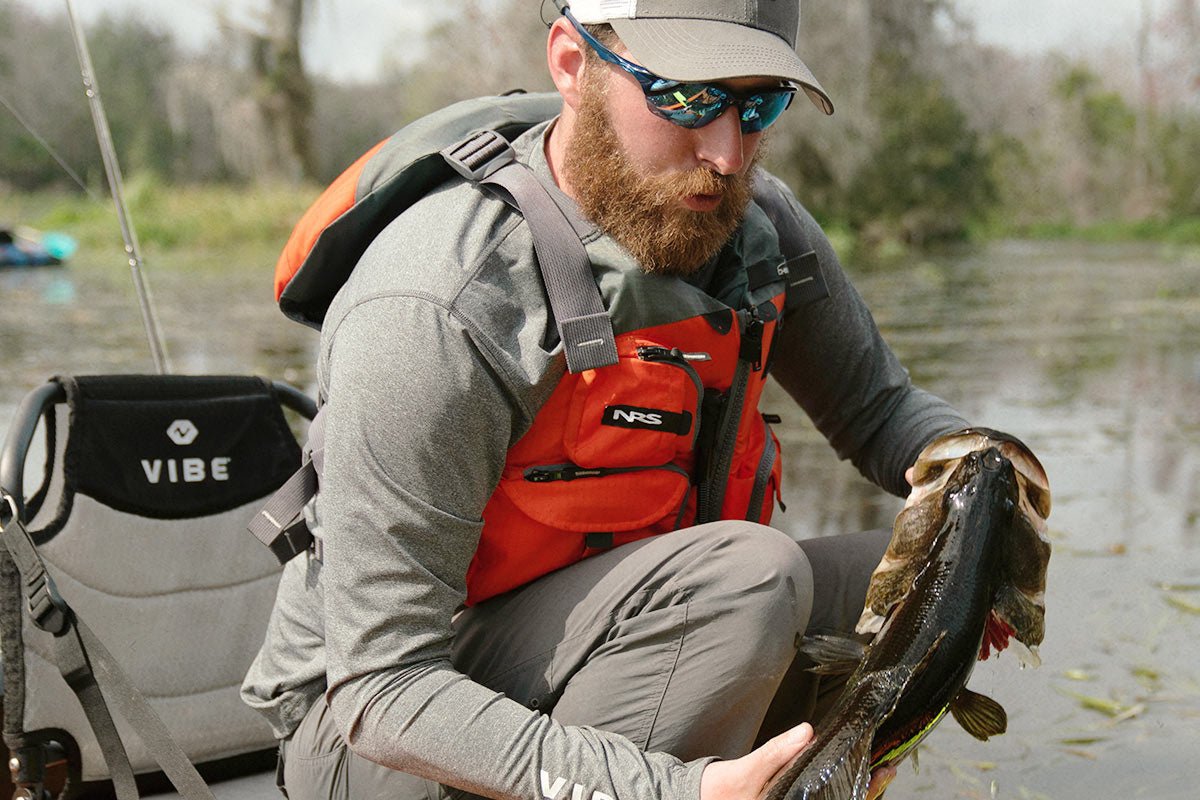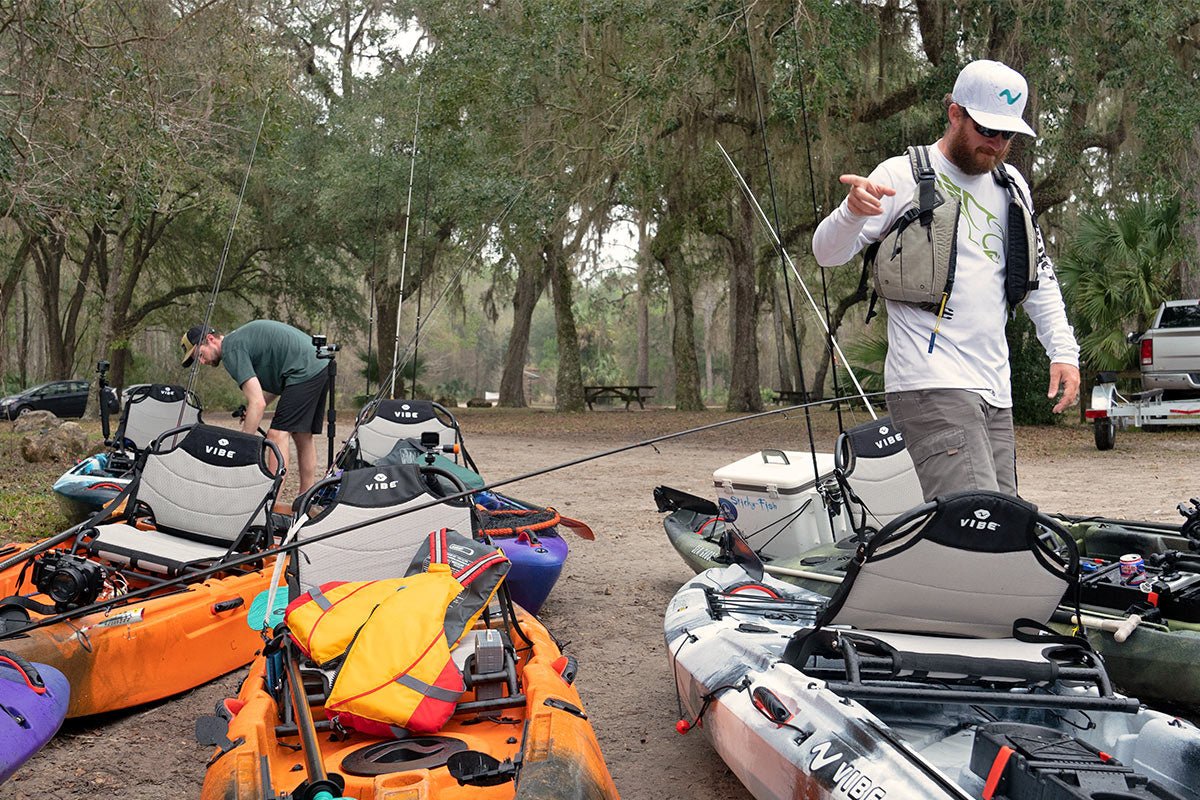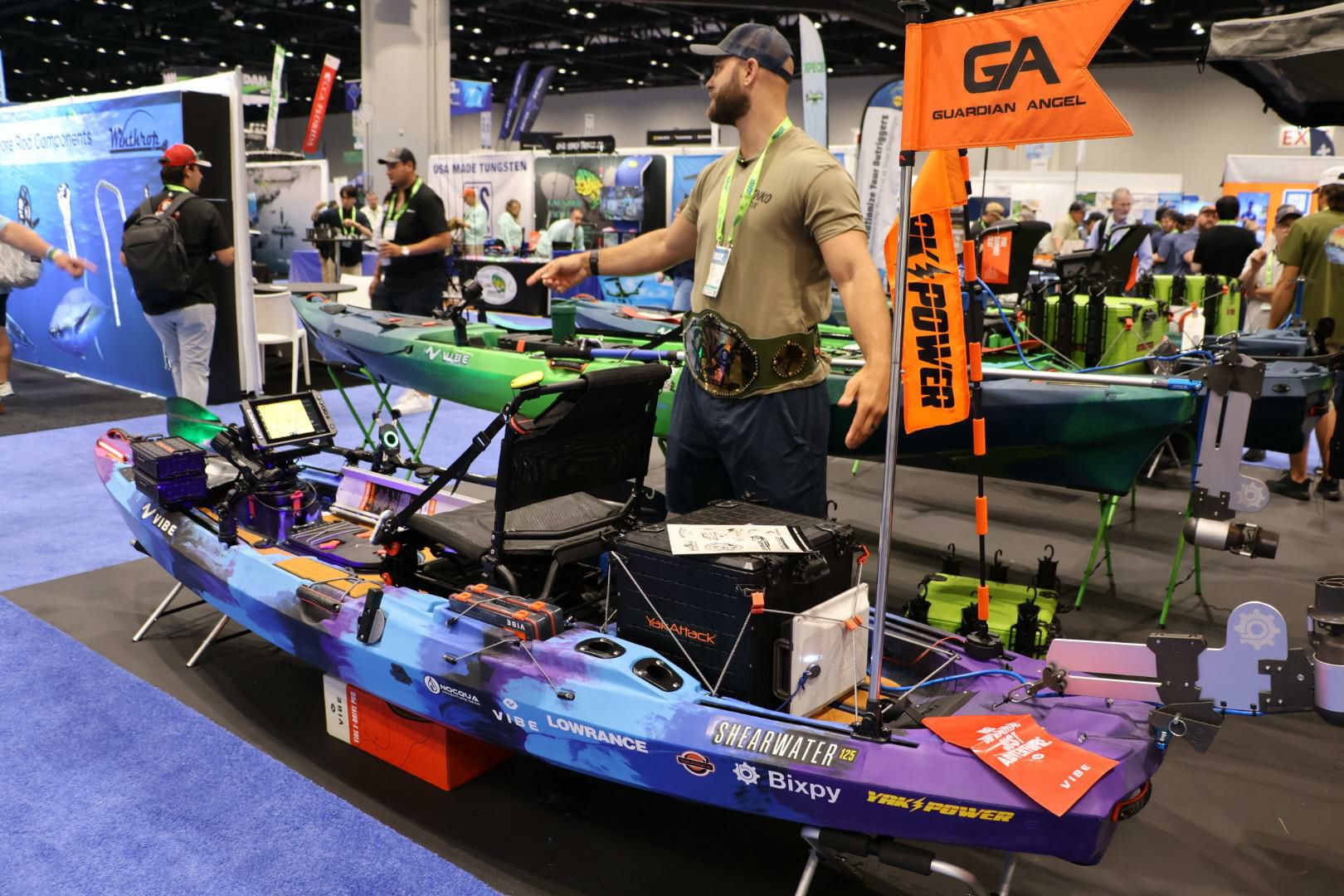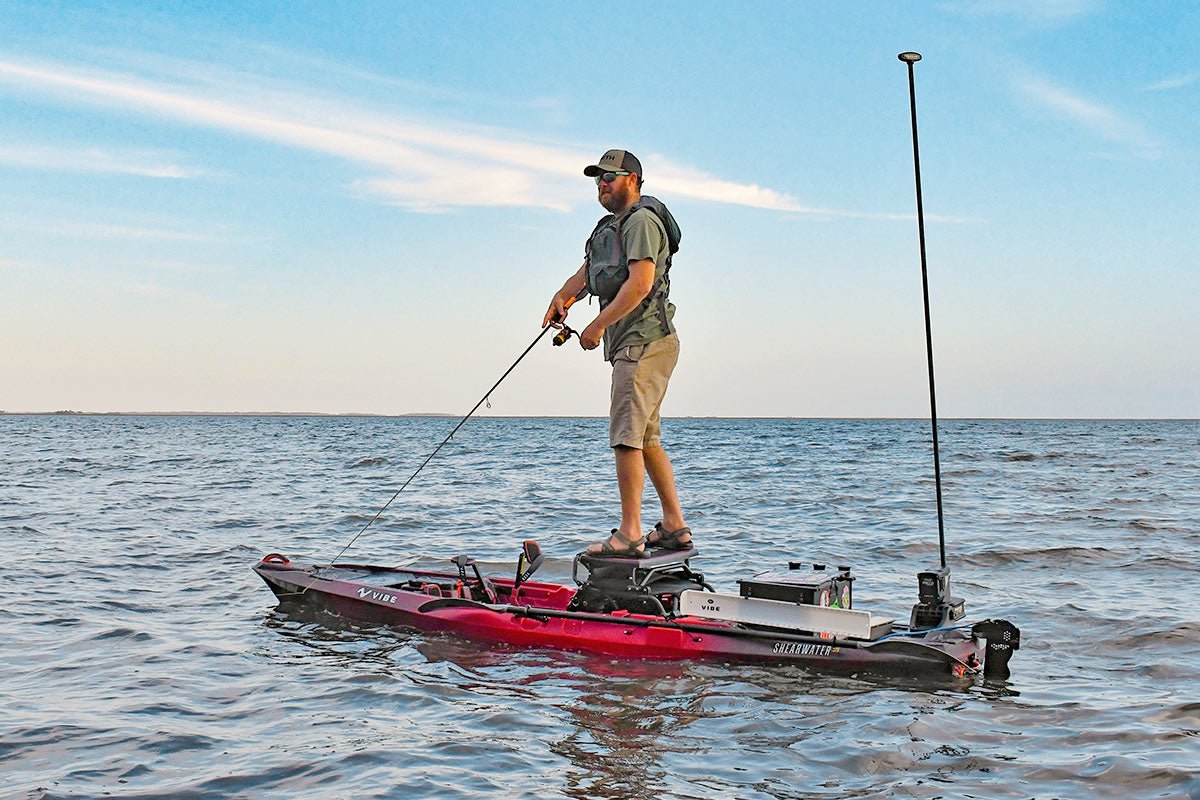How to Choose a PFD (Life Jacket)

A personal flotation device – also known as a PFD – gives you more buoyancy to help you stay afloat in water. A PFD is a truly essential piece of gear for every kayaker, whether fishing or recreational.
There are five different types of U.S. Coast Guard-approved PFDs that have a variety of end uses, but we focus here on ones used primarily for kayaking.
To help you choose the right PFD for you, we'll cover:
Standard PFDs vs. Inflatable PFDs: You can’t go wrong with a tried-and-true standard PFD. Inflatable PFDs are fine, but they are not going to serve you or your activities on the water as well as the traditional PFD that floats without the need to inflate it.
PFD sizing and fitting: Sizing for adults is based on your chest size, and you’re looking for a snug-but-comfortable fit.
PFD features and specs: Features such as pockets, color and tabs, and specifications like flotation and U.S. Coast Guard Type, are things you may want to look for when shopping.
As you consider what PFD is right for you, keep in mind that the most important advice about PFDs is simply this = Be sure to always wear one.
Standard PFDs vs. Inflatable PFDs: The majority of PFDs on the market are standard, non-inflatable ones. They always float and don't need inflating.
Standard PFDs
These are PFDs that you’ll see most recreational and fishing kayakers wearing. They look like a vest and rely on flotation material, often foam, to create buoyancy. These are labeled as Type III USCG-approved PFDs.
Benefits of standard PFDs:
¬ Low-maintenance: Other than keeping it clean, dry and out of the sun when not in use, a standard PFD requires very little care.
¬ Inherently buoyant: Other than putting it on properly, you don’t need to activate a standard PFD in any way for it to provide flotation.
¬ Versatile: A standard PFD can be used for many different water sports, such as kayaking, fishing, canoeing, and paddle boarding.
¬ Pockets: Most standard PFDs provide pockets for stashing snacks, tools, sunscreen, emergency gear and fishing equipment, something you won’t find on inflatable PFDs.
PFD Sizing and Fitting
Get the right size: For adults, your chest size — not your weight — will determine what size PFD you need. (For children, their weight will determine the size.)
To get your chest size, measure the circumference of your chest at its broadest point. Use this number along with the PFD manufacturer’s size recommendations to find the right size for you. You can find sizing information on REI product pages.
To get the right fit for your PFD, follow these steps:
With a standard PFD, loosen all the straps, put the PFD on and zip it up. Start at the waist and tighten all the straps. If it has shoulder straps, tighten them last. It should feel snug but not uncomfortable. Then have someone pull up on the PFD shoulders. If it moves up past your nose or head, tighten the straps. If it still moves up, the PFD is too large.
A properly sized PFD should be snug and fit like a glove, yet allow you to move freely and not chafe while paddling and playing.
PFD fit tips:
¬ To get the best feel and fit when trying on a PFD, wear the clothes you would while paddling.
Check your movements to make sure it’s comfortable and won’t chafe you while paddling.
¬ If you’re a kayaker, take note of how the PFD works with the seat. The PFD shouldn’t ride up or feel uncomfortable. Most kayakers find that a short PFD works best.
¬ The more straps a PFD has, the more adjustments can be made to customize its fit.
¬ Women-specific PFDs typically offer a better fit than unisex ones for females thanks to contoured cups for bust lines and styles made for women’s torso lengths.
PFDs for Kids
There are important sizing and fit differences between an adult PFD and a child's PFD. Most notably, you use the child’s weight to determine the correct size rather than using a chest measurement like you do for an adult.
Children’s life jackets are labeled as being for an infant, child or youth. To figure out which life jacket to buy for your child, you use their weight as a guide:
Infant PFDs: 8–30 pounds
Child PFDs: 30–50 pounds
Youth PFDs: 50–90 pounds
PFDs for Dogs
While many dogs are good swimmers, others lack confidence in the water or they may tire or panic away from shore. Dog PFDs are not USCG certified, but they can still be a lifesaver and help your pet to enjoy the water.
To get the right life jacket for your dog:
¬ It should fit snugly so your dog cannot twist, step or swim out of it.
¬ Look for a low-profile style that will have less potential of catching a snag.
¬ Look for one with easy-release buckles.
¬ Choose one that has a handle for lifting your pup out of the water.
PFD Features
Pockets: Most standard, non-inflatable PFDs have pockets on the front. Consider their size and placement and the gear you’d like to stow in them.
Color: A bright color improves visibility.
Tabs: Tabs let you attach a knife, whistle, strobes or other accessories. Look at the number of tabs and their location on the front and back on the PFD.
Reflective tape: This adds visibility in low-light conditions.
Ventilation: If you’re regularly paddling in hot locations, look for a PFD that has built-in vents that allow body heat to escape.
Fishing features: Some PFDs have multiple tool hangers, loops for a rod and a drop-down pocket table for working with lures and flies.
PFD Specifications
Flotation (aka buoyancy): This is the force (in pounds) required to keep a person's head and chin afloat above water. Most adults need just an extra seven to 12 pounds of flotation to stay afloat. Any quality PFD will provide more than this amount, so you don’t need to spend much time analyzing this number.
Keep in mind when comparing buoyancy numbers that a person’s weight, body fat, lung size and clothing, and whether the water is rough or calm, are all factors that affect flotation.
USCG classification: There are five categories of PFDs as determined by the U.S. Coast Guard, but kayakers, canoers and stand up paddle boarders almost always choose one of two types: Type III or Type V. This is because Type III and Type V PFDs are typically the most comfortable for these activities.
With that said, it can be helpful to know a bit about all types of PFDs available so you can decide which one is the best option for you:
Type I PFDs are geared for rough or remote waters where rescue may take a while. Though bulky, they have the most buoyancy and will turn most unconscious people into a face-up position. They are the kind of PFD you’ll likely find on commercial vessels. Type I PFDs are available in inherently buoyant, inflatable or hybrid designs.
Type II PFDs are intended for calm inland waters, where fast rescue is likely. They have a very basic design that is less bulky than Type I, and typically less expensive, but they are not as comfortable as Type III. They will turn some unconscious wearers to the face-up position. Type II PFDs come in inherently buoyant, inflatable or hybrid designs.
Type III PFDs are suitable for most paddlers where there is a chance for quick rescue. They offer freedom of movement and comfort for continuous wear. These PFDs are designed so wearers can put themselves in a face-up position, but they may have to tilt their head back to avoid being face down in water. Type III PFDs come in inherently buoyant, inflatable or hybrid designs.
Type IV PFDs are flotation devices that are meant to be thrown to a conscious person who is in trouble and provide backup to a PFD. Examples include life rings and buoyant cushions. Type IV PFDs are not meant to be worn and they are not required for canoes, kayaks or SUPs.
Type V PFDs are considered special-use devices and intended for specific activities. To be acceptable by the USCG, they must be worn at all times and used for the activity specified on the label. Varieties include kayaking, waterskiing, windsurfing, deck suits and hybrid inflatable vests. Type V PFDs come in inflatable or hybrid (inherently buoyant and inflatable) designs.
Knowing how to choose the right PFD will help ensure safer and more fun experiences on the water.



